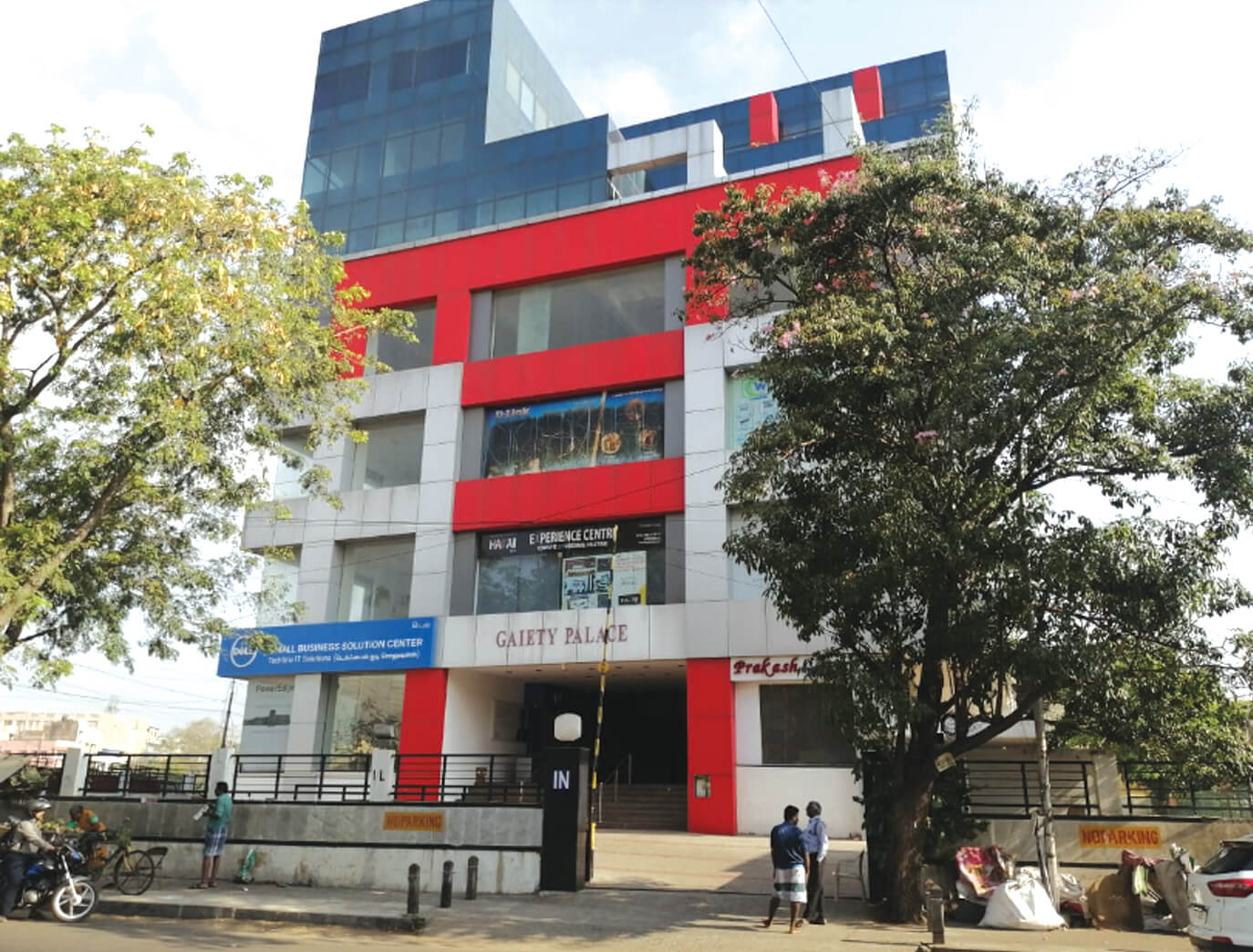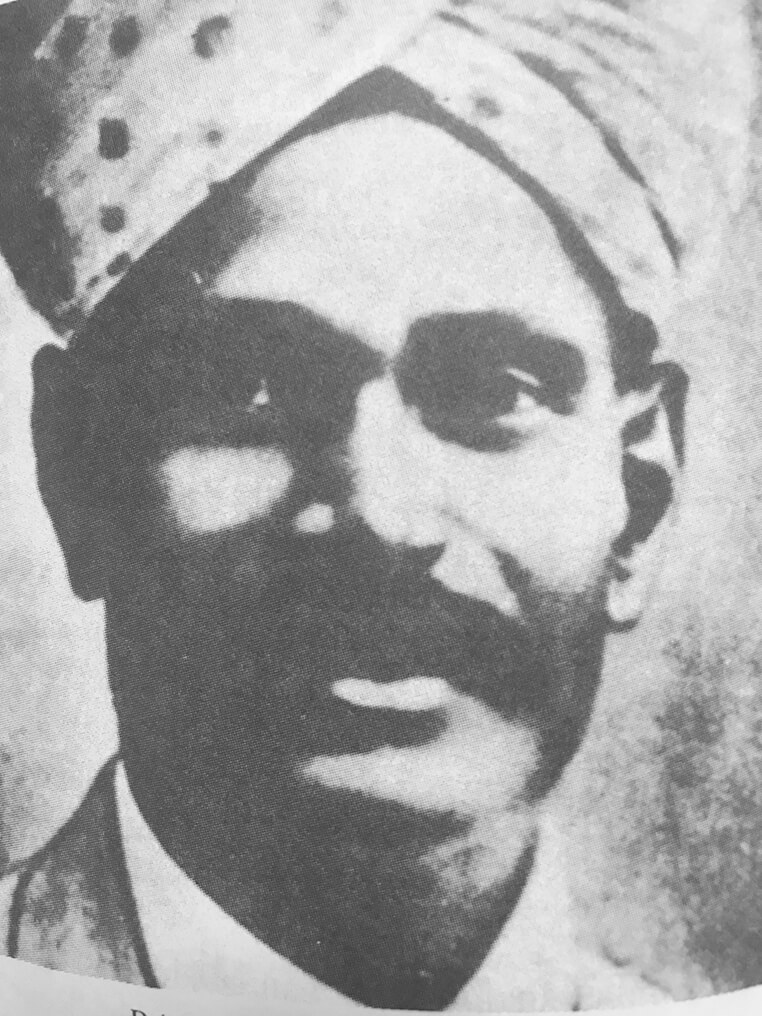Registered with the Registrar of Newspapers for India under R.N.I 53640/91
Vol. XXIX No. 23, March 16-31 2020
Lost Landmarks of Chennai
by Sriram V
 The Gaiety Palace which occupies the space where the Gaiety theatre stood
The Gaiety Palace which occupies the space where the Gaiety theatre stoodNot much Gaiety in its history
Whenever conversation turns to the vanished theatres of the city, the Gaiety is sure to be among the first subjects of discussion. And yet very few people actually have memories of watching a film there. That is because it was associated with reruns almost from the 1970s and more importantly, morning shows of films that can at best be described as titillating. But it cannot be denied that it belongs to the earliest batch of cinema theatres in our film-crazy city.
 Raghupathy Venkayya.
Raghupathy Venkayya.The origins of the theatre are given in Randor Guy’s Starlight Starbright, the Early Tamil Cinema (Amra Publishers, 1997). Among the pioneers of South Indian cinema was Raghupathy Venkayya, a successful photographer of Madras. Intrigued by the exhibition in 1909 of a chrono-megaphone – a combination unit comprising a film projector and a gramophone player – he bought it for a mammoth sum of Rs. 30,000 and set up a tent theatre in the Esplanade area, on the land where the Raja Annamalai Manram is now located. The shows were a sellout, as were the ones at Burma and Ceylon, where he took the equipment to. By the time he returned, Venkayya had come to the conclusion that he needed to get into the business of exhibiting films in permanent structures.
His was not the first, for Madras already had Mrs. Klugg’s Bioscope (1911), the Lyric, a playhouse that doubled as a cinema theatre and on whose space the (old) Elphinstone would later come up, and Warwick Major’s Electric Bioscope, built in 1913 and now the philatelic bureau on Anna Salai. Venkayya constructed three theatres of which the Gaiety was the first. It holds the record for being the first such facility in Madras to be built by an Indian. The name was undoubtedly inspired by the Gaiety theatre in Simla, India’s imperial summer capital. That was a vast Gothic structure designed by Henry Irwin and completed in 1887. In design, the one at Madras could not have been more different – while Simla’s Gaiety was almost forbidding in its exterior, it could accommodate at most 300 people. The Madras Gaiety, simple in architecture, could hold 800. No photograph has survived of how the theatre looked in Venkayya’s time, but going by the other two he built – the Crown on Mint Street and the Globe (later Roxy) in Purasawalkam – it would be safe to assume that it was a building with no parking facilities and opened directly on to the road.
The land belonged to Haji Sir Ismail Sait, a prosperous businessman of Bangalore who pioneered the retailing of kerosene in Madras. He was also renowned for his philanthropy and several charities of his continue in the former city even today. Venkayya leased the land which was at the intersection of Blacker’s and Dam’s Roads and constructed the Gaiety on it. The initial going was good. Encouraged, he decided to get into film production and sent his son Prakash to receive training at London. The latter returned with a second-hand camera after his stint in the UK.
Father and son promoted Gajalakshmi Productions and embarked on filming Meenakshi Kalyanam. Technical difficulties with the camera nixed this venture but they remained undaunted. Their subsequent films, made at their studio The Star of the East in Purasawalkam, proved successful. Beginning with Bhishma Pratigna (1922) they made several more films till 1925, all displayed at The Gaiety among others. However, both father and son lacked financial discipline and by 1926, Venkayya was declared an insolvent. He withdrew from films though his son continued in the industry for quite a while. But in the immediate aftermath of the bankruptcy, all the theatres of Venkayya were taken over by the official assignee of the High Court of Madras, who in turn leased the land and building to a Mrs. Piroja Fram Madan, probably one of the family members of Jamshetjee Framjee Madan, who till his passing in the 1920s, was the leading film distributor of India, owning theatres all over the country, all named Elphinstone. Mrs. Madan ran the Gaiety till 1937 when she made over the lease to T.S. Pl. P. Chidambaram Chettiar, who was expected to vacate the premises on expiry of the term in 1942.
In the meanwhile, the neighbouring property, also part of the Haji Sir Ismail Sait Trust, was taken on lease by J.H Irani, who ran a successful ice-making facility in Madras (see Lost Landmarks of Chennai, MM, Vol. XXVIII No. 4, June 1st, 2018). They wanted to construct and run a cinema theatre on the land, chiefly to spite another Parsi theatre owner who had decided to get into the ice-making business! J.H’s son P.J had just qualified as a civil engineer from Guindy and he built Casino on the neighbouring land in 1940. With the lease on the Gaiety expiring in 1942, the Iranis expected to take over that theatre too, but they found Chidambaram Chettiar a tough opponent. He refused to vacate the premises and litigation prolonged till 1961, when the Iranis finally were granted possession. However, it would appear that the lease was eventually made over to the Chettiar. At least till 2001, when films were last screened here, the lease was in the name of one of his descendants.
As far as the film history of the theatre is concerned, we learn some details from Explorations in New Cinema History (Richard Maltby, Daniel Biltereyst and Philip Meers ed, Wiley Blackwell 2011). It appears that under Venkayya, the theatre specialized in serials from Universal Studios. A film of 60 reels was cut into four parts and serialized in the theatre over four weeks, the change of reels to the subsequent part happening on Friday. Thus, as Avvai T.K Shanmugam wrote, if you wanted to know how the film ended, you needed to wait for a month. Initially, with these serials, the Gaiety catered to the European clientele that came to shop on Mount Road. After Mrs. Madan took over, the new management decided to stop serials and focus on Indian films but found patronage dropping. It had to revert to serials. But by the 1930s, the Gaiety was screening plenty of Indian films and had come down the social scale. Its principal clientele was from the working class.
On Sunday, September 18, 1938, the theatres of Madras decided to run films for free. This was widely advertised and, expecting large crowds, most cinema houses informed the police stations nearby requesting for the posting of an adequate force to control unruly behaviour. This the manager of the Gaiety apparently overlooked and just two constables sauntered in to find huge crowds within and outside the theatre. By the time reinforcements arrived, the management had locked the gates leading to a near stampede situation. Some unruly elements scaled a side wall and threw open the gates on the Dam’s Road side leading to much chaos. As many as 18 people were injured and one woman died. Questions on adequate safety in the theatre rocked the Madras Legislative Assembly. A year later, the Gaiety was back in the news, this time for screening Thyaga Bhoomi.
The K. Subrahmanyam masterpiece was running to full houses when news leaked that the Government was considering its ban owing to seditious content. S.S Vasan, who was the principal distributor, ordered the Gaiety to run free shows till the ban order was served. What happened thereafter is well known though it must be acknowledged here that there are no records to substantiate the oft-repeated claim that those who were watching the film were lathi charged inside the theatre.
After those action-packed early years, the Gaiety deteriorated, in sharp contrast to neighbouring Casino, which specialized in English films. It became a theatre known for screening films with explicit sexual content, which brought down its reputation further. It remained closed for some time in the 1980s and re-opened after refurbishment, only to close again. It is now a commercial building, modern in the extreme and sporting the name Gaiety Palace, thereby retaining a connect to the past.

